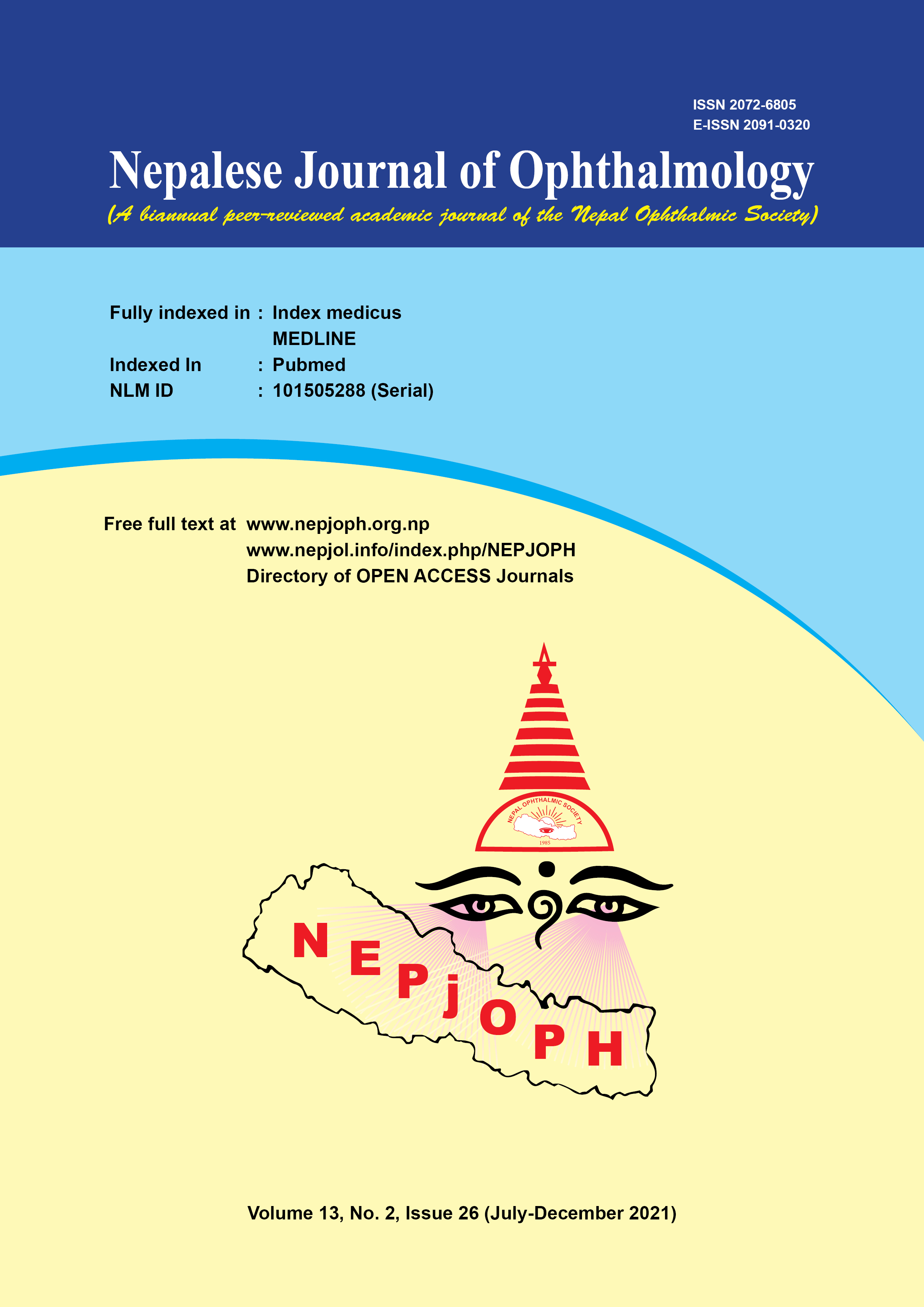Impression Cytology Screening for Ocular Surface changes in various forms of Vernal Keratoconjunctivitis in Subtropical Central Zone in India
DOI:
https://doi.org/10.3126/nepjoph.v13i2.32838Keywords:
Allergic conjunctivitis, Cytomorphology, Impression cytology, VKCAbstract
Introduction: Vernal keratoconjunctivitis (VKC) is a chronic recurrent allergic disorder of the eye more common in warm and dry climates like central India. Chronic and recurrent nature of disease requires long duration of treatment which leads to changes in ocular surface leading to cytomorphological distortion of goblet cells, that can be evaluated by impression cytology. Clinical presentation and impact of disease on cytomorphology of ocular surface was analysed in various forms of the VKC. The objective of this study was to find correlation of clinical profile and cytomorphological changes in ocular surface in patients with various forms of vernal keratoconjunctivitis.
Materials and methods: This cross sectional study analysed 120 eyes of 60 patients of various forms of vernal keratoconjunctivitis. Detailed history was taken along with complete ophthalmic examination. Vernal keratoconjunctivitis was graded as per Gokhale et al classification. Impression cytology for goblet cell morphology and metaplasia according to classification given by Saini et al was done. Cytological changes were noted for different age groups, duration of disease, and severity of disease.
Results: Vernal keratoconjunctivitis was seen more commonly in males and in the second decade of life which shows a changing trend towards higher age. Milder forms were more commonly present than moderate and severe forms. Mostly Grade 2 changes were seen on impression cytology.
Conclusion: Increasing severity, duration of disease and age of presentation was directly proportionate to greater cytological changes on ocular surface.
Downloads
Downloads
Published
How to Cite
Issue
Section
License
Copyright (c) 2021 Nepalese Journal of Ophthalmology

This work is licensed under a Creative Commons Attribution-NonCommercial-NoDerivatives 4.0 International License.
This license enables reusers to copy and distribute the material in any medium or format in unadapted form only, for noncommercial purposes only, and only so long as attribution is given to the creator.




